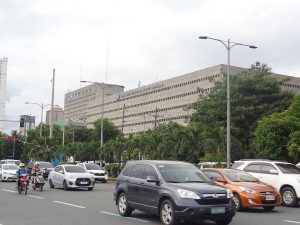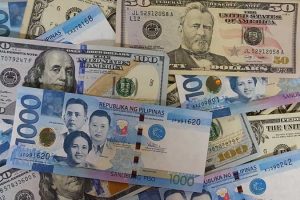BSP proposes criteria to assess sustainable activities for banking

THE Bangko Sentral ng Pilipinas (BSP) is proposing three essential criteria that financial institutions and regulators can use to evaluate the environmental sustainability of their economic activity.
In a draft circular posted on its website, the central bank released a consultation paper that assesses the design of the Philippines Sustainable Finance Taxonomy Guidelines (SFTG) and outlines the proposed scope, objectives, and operations for the financial sector.
Stakeholders have until Oct. 6 to give feedback on the proposed guidelines.
The BSP proposed that for each economic activity to be taxonomy aligned, it should fulfill three “essential” criteria: do no significant harm (DNSH), remedial measures to transition (RMT), and minimum social safeguards (MSS).
The criteria aim “to ensure that the activity does not contribute to an objective at the cost of doing damage to another objective or society,” the central bank said, adding that “they are particularly important in considering a just transition approach.”
A sustainable finance taxonomy serves as a guide for companies, investors, financial institutions, regulators, and consumers to help them make an informed decision on whether to finance, purchase, or monitor an asset, product, project, activity, company or portfolio that is aligned with the sustainability agenda.
According to the BSP, an activity should not do any significant harm to any other environmental objectives.
“For example, a wind farm that is built in a coastal area that is vulnerable to significant storm surges may significantly harm the climate change adaptation objective if it is not reasonably designed to withstand expected climate change impacts,” it said.
But if an activity does cause harm to another objective, it may still be aligned with the taxonomy given that it has taken RMT, which will require the removal of the significant harm within a specified time frame.
“If significant harm is occurring or will occur, and RMT is not planned to be completed within the specified timeframe, the Activity is automatically classified as Red,” the BSP said.
“If an assessment shows that an activity is causing or may cause significant harm, the classification can be downgraded to a lower color-coded classification (e.g., Amber), pending effective remediation,” it said.
The central bank noted that the Association of Southeast Asian Nations (ASEAN) Taxonomy version 2.0 imposes a five-year time frame where any RMT should be fulfilled.
The Philippine SFTG, at its current level, is mainly based on the ASEAN Taxonomy’s Foundation Framework as it is the main guide that aims to foster sustainable finance among the bloc’s member countries.
Meanwhile, the MSS is a set of standards that ensures entities comply with regulatory requirements and international social frameworks in conducting an economic activity that is suitable for sustainable financing.
“This assessment is typically done at the company level as opposed to the activity level. Applying this principle ensures that the activity achieving an environmental objective is not done while harming a social aspect,” the BSP said.
The central bank proposes to adopt the three social safeguards of the ASEAN taxonomy to the Philippines. This includes the promotion and protection of human rights, prevention of forced labor, protection of children’s rights, and impact on people living close to investments.
Meanwhile, the BSP said the SFTG will be developed in phases, adopting as a first phase a “principles-based” approach to determining whether an activity aligns with the SFTG. It also draws on a range of national and regional taxonomy projects.
“The first phase will take a principles-based approach using qualitative assessments of activities or projects with emphasis on climate change mitigation and climate change adaptation objectives,” it said.
“The readiness of the financial sector and the limited availability of data favor this approach. Subsequent phases will extend the environmental objectives to the Protection of Biodiversity and Transition to a Circular Economy,” it said.
A “traffic light” classification system will also be used. Activities will be assessed with a series of guiding questions and decisions to ultimately determine if it is green, amber or red under the principles-based approach.
Environmental objectives usually include climate change mitigation and adaptation, protection of biodiversity and ecosystem loss, water and wastewater management, pollution prevention and control, and transition to a circular economy.
Social objectives have also been included in selected taxonomies, such as gender equality, health and education. The Philippine SFTG may consider these social objectives in future versions, the BSP said.
Aside from the ASEAN taxonomy, other taxonomies such as Bank Negara Malaysia’s Climate Change and Principle-based Taxonomy, the Indonesian Green Taxonomy, the Green Finance Industry Taskforce Singapore’s Taxonomy, and the European Union Taxonomy have been considered in the Philippines.
In the draft rules, the BSP said the country should prioritize six sectors in lowering greenhouse gas (GHG) emissions to mitigate the impact of climate change.
These sectors include energy, transport, waste, the industrial sector, agriculture, as well as coastal and marine resources.
“The selection of these sectors shows the Philippines’ commitment to reducing GHG emissions in all sectors of the economy, as well as its focus on adaptation and resilience-building measures to address the impacts of climate change,” the BSP said.
In December last year, the BSP launched its 11-point sustainable central banking agenda as it seeks to mitigate climate risks by advocating green policies and practices.
The BSP released its first sustainability report in July, which outlines the progress made in advancing the sustainability agenda in the Philippine financial system last year. — Keisha B. Ta-asan




